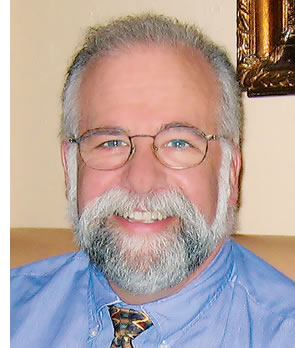 For more than three decades, the advancement of computing power has followed Moore’s Law—the number of transistors on a computer chip has doubled every 18 months. For more than three decades, the advancement of computing power has followed Moore’s Law—the number of transistors on a computer chip has doubled every 18 months.
There’s a funny thing about doubling. You can start off easily: 2, 4, 8, 16, 32, 64, and so on...and think that not too much is changing each round.
Now we’re at a point where your cell phone has more computing power than the computers that ran the Apollo 11 mission. We measure that computing power in FLoating point OPerations per Second (FLOPs). After a couple of decades of doubling through kiloflops to megaflops and then gigaflops, we’re now seeing desktop computer teraflops (1 teraflop = 1,000 gigaflops). In August a new PC graphics card was introduced that is capable of sustaining 2.4 teraflops. In 2000 that much computing power would have cost $1.6 million. Now it’s yours for $300.
In data storage, a similar story holds. The latest generation of hard disk drives for personal computers is now being offered at an incredible 1.5 terabytes (1 terabyte = 1,000 gigabytes)...and can be yours for only $300 or less by the time you read this.
These trends are not going to stop. But now, every doubling cycle is so quantitatively significant that it is starting to feel as though we’re on the threshold of something transformational and revolutionary.
In biomedical research, such computing power can start to open up entirely new fields and shed light on fundamental biology in ways that we can barely imagine.
All this leads me to wonder: Given a patient’s DNA and a set of clinical data, can we compute their health? Or, should we consider it a given that we can do so—it’s just a matter of when we will be able to and how we will get there.
The current rising generation of scientists grew up with powerful technology at their fingertips. Are we providing these digital natives with the right intellectual tools to take the best advantage of future computing? To what extent can we hasten our work by ensuring that our graduate programs and the research communities in which they train are not inhibited by centuries-old disciplinary boundaries?
Our physicians, nurses, and other health care professionals are increasingly working in a digital environment, but our national health informatics infrastructure is still grossly inadequate. With the right standards and protections in place and with a detailed health record and sequenced individual genome, what will happen to the role of the doctor? Will the medical informatics specialist of the future make machine-aided diagnoses?
The University of Miami took a giant step forward to address these challenges and opportunities with the creation of the new UM Center for Computational Science (CCS). Engineers and scientists from CCS are collaborating with faculty across all our campuses and stimulating new ways of approaching long-standing problems. In parallel, the Miller School of Medicine is making significant investments in health and clinical research informatics infrastructure to bring research into every aspect of our clinical practice.
These investments will help make UHealth a leader in creating new, clinically useful knowledge and delivering it to the benefit of our patients.
After all, that’s our mission.
Richard J. Bookman, Ph.D., is the University of Miami’s vice provost for research and the Miller School’s executive dean for research and research training.
|


